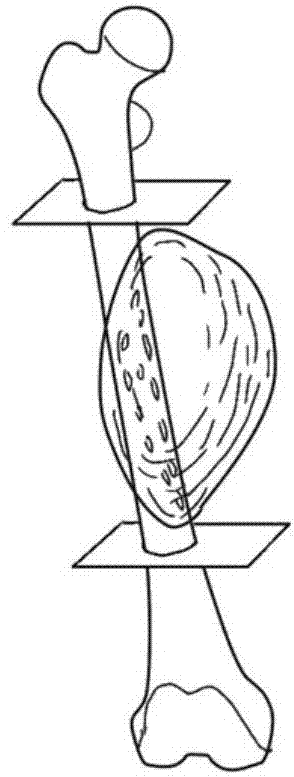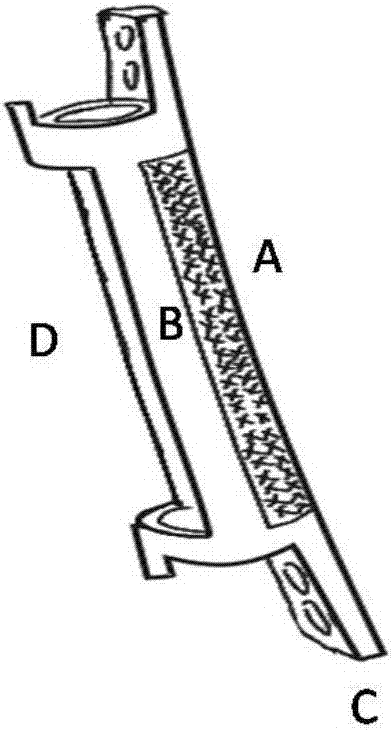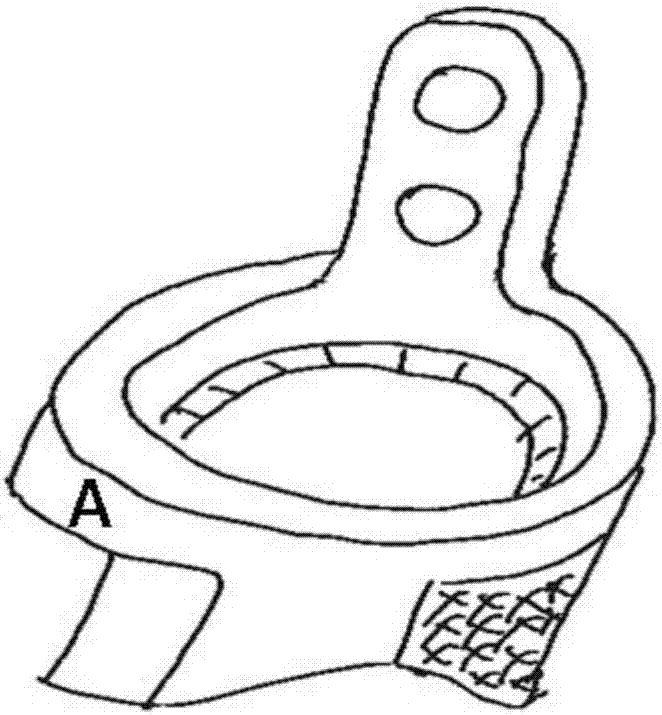Designing and making method of customized 3D printing porous titanium alloy segmental prosthesis for reconstruction of large segmental bone defect
A 3D printing and titanium alloy technology, applied in 3D printing, metal processing equipment, prostheses, etc., can solve the problems that it is difficult to accurately control the external shape and internal structure of metal prostheses, and achieve low stress shielding effect, enhanced stability, Avoid the effect of bone resorption
- Summary
- Abstract
- Description
- Claims
- Application Information
AI Technical Summary
Problems solved by technology
Method used
Image
Examples
Embodiment Construction
[0023] The present invention will be described in further detail below in conjunction with the accompanying drawings.
[0024] 1) if figure 1 Collect the thin-slice CT scan and MRI imaging data of the patient's part to be reconstructed as shown, and the doctor determines the safe osteotomy range according to the nature of the lesion, designs the surgical path and determines the osteotomy plane;
[0025] 2) Preparation of individualized titanium alloy segmental prosthesis:
[0026] Computer-aided design software is used to design the external shape and structure of the personalized prosthesis according to the patient's thin-slice CT scan data, MRI image data, surgical path and osteotomy plane shape of the lesion. Its basic form is as figure 2 , 3 shown. In order to facilitate bone grafting, its main structure is a hollow tubular shape. The tube wall is mainly porous structure, according to the reconstruction site, method and bone grafting requirements, the corresponding t...
PUM
| Property | Measurement | Unit |
|---|---|---|
| pore size | aaaaa | aaaaa |
| porosity | aaaaa | aaaaa |
Abstract
Description
Claims
Application Information
 Login to View More
Login to View More - R&D
- Intellectual Property
- Life Sciences
- Materials
- Tech Scout
- Unparalleled Data Quality
- Higher Quality Content
- 60% Fewer Hallucinations
Browse by: Latest US Patents, China's latest patents, Technical Efficacy Thesaurus, Application Domain, Technology Topic, Popular Technical Reports.
© 2025 PatSnap. All rights reserved.Legal|Privacy policy|Modern Slavery Act Transparency Statement|Sitemap|About US| Contact US: help@patsnap.com



